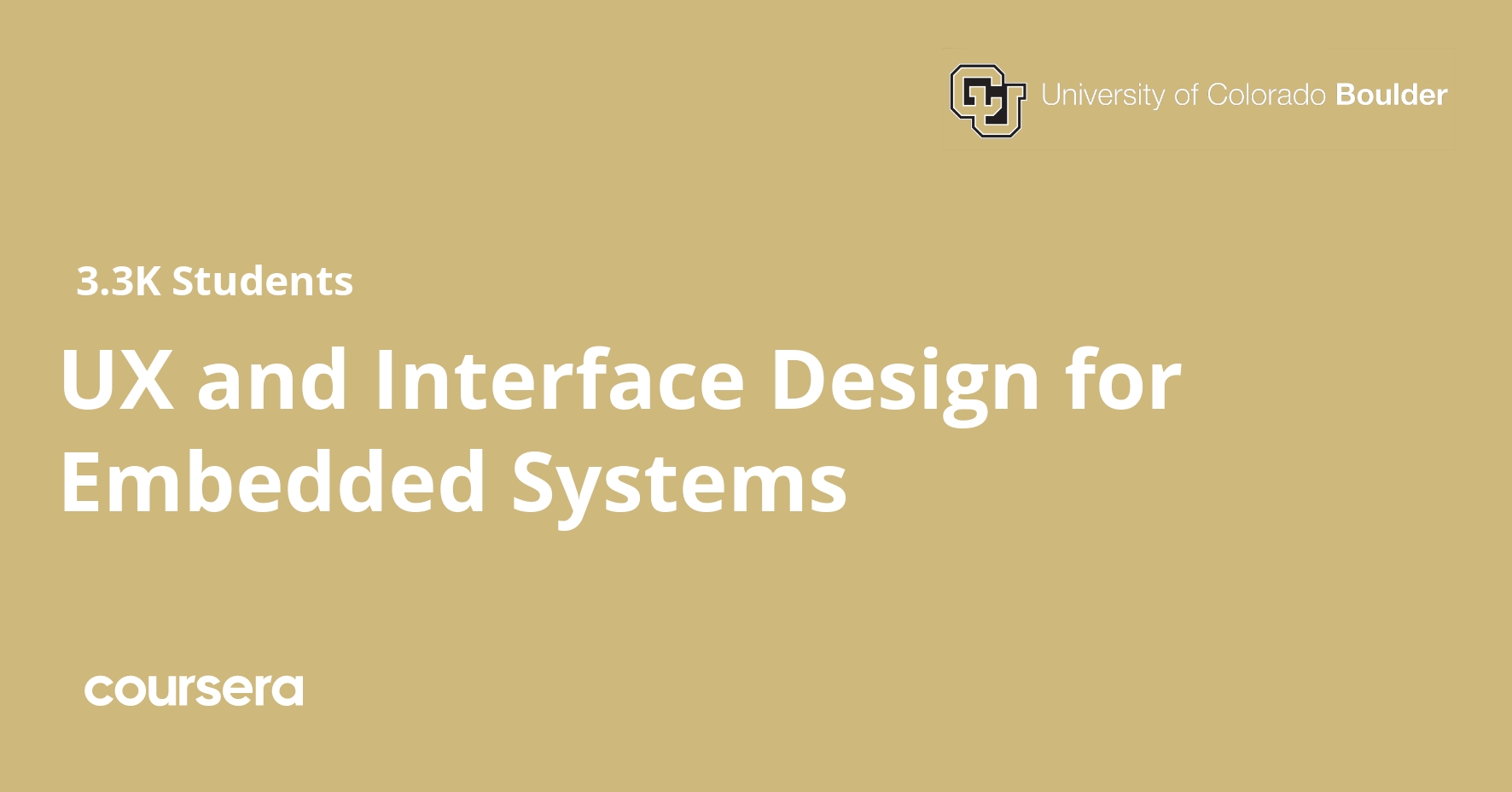Description
This course can also be taken for academic credit as ECEA 5346, part of CU Boulder’s Master of Science in Electrical Engineering degree.
UX and Interface Design for Embedded Systems is the first of three classes in the Embedded Interface Design (EID) specialization, an online version of the on-campus EID class taught in graduate embedded systems design. This first course is focused on user experience (UX) and the related methods, practices, and principles that will help ensure your embedded interface designs for devices and systems are what your users both need and want. The class includes an introduction to UX, and then a four phase breakdown of a typical UX design process, including planning, user research, design methods, and testing for verification and validation. Much of the content provides generally applicable UX techniques, but particular focus is included for considerations in developing embedded devices. The class includes practical projects that let you try some of the key methods in a thorough interface design process.
What you will learn
Introduction to UX and UI
An introduction to User Experience (UX), User Interface (UI), and usability concepts and definitions as they relate to embedded systems and interface development in particular and in general. Includes a comparison of formal UX studies vs. the discount methods reviewed in the class for practical work on UX in design projects. Also a look at some human characteristics that impact the design of embedded interfaces.
UX Analysis and Planning
A walk through early planning and analysis stages for UX projects: why the planning matters, methods that can be used. Introduces the Work Breakdown Structure (WBS) as a key approach to scope project tasks. Also includes an early look at potential interface components that may be used in embedded designs.
UX Research
Focus for this module is on user research – understanding who the users are, what are they trying to accomplish, how can your interface design support and delight them. We review a number of approaches to structuring, performing, and documenting user research, including a special focus on personas of different types and on use cases, both in text and in UML (Unified Modeling Language) graphical formats.
UX Design
This module looks at integrating user needs, tasks, and concerns into our UX and UI design work. Standard methods for UX design will be presented, with a particular focus on usability heuristics, a proven approach to assessing and improving an interface design, and on various forms of sketching, an important design tool for every design engineer’s toolkit.





